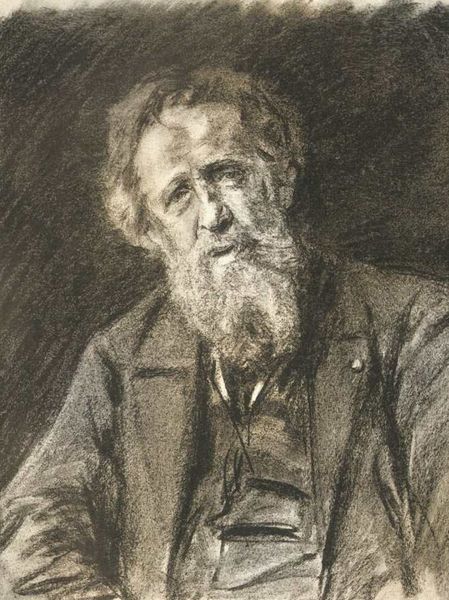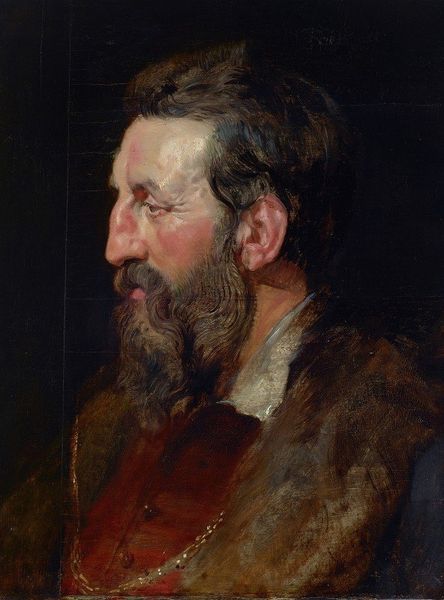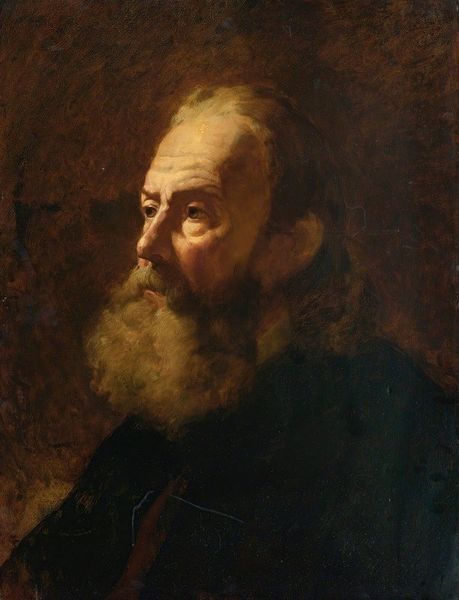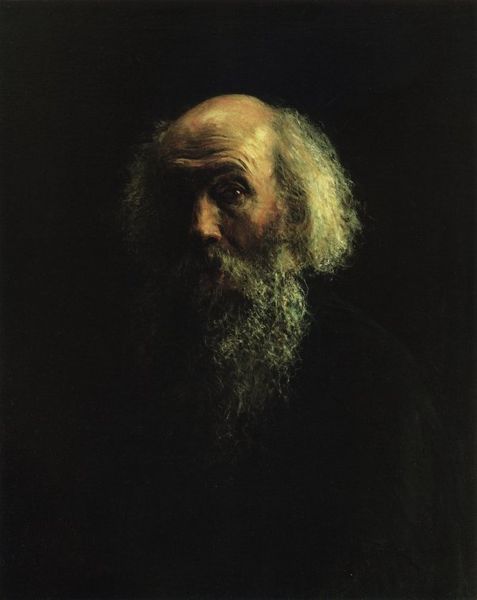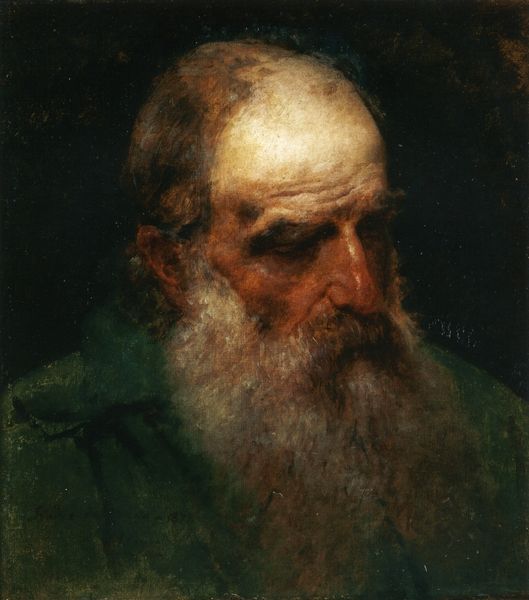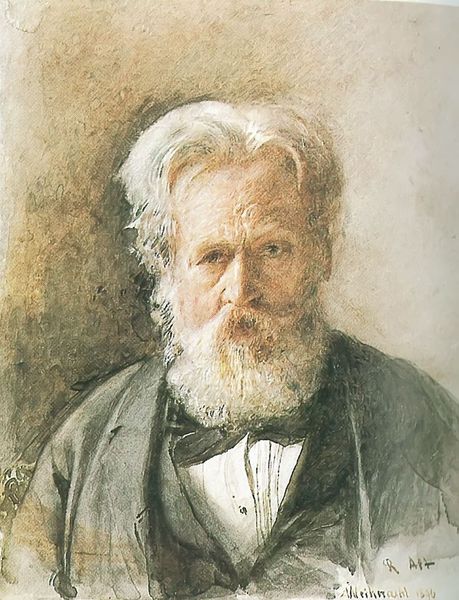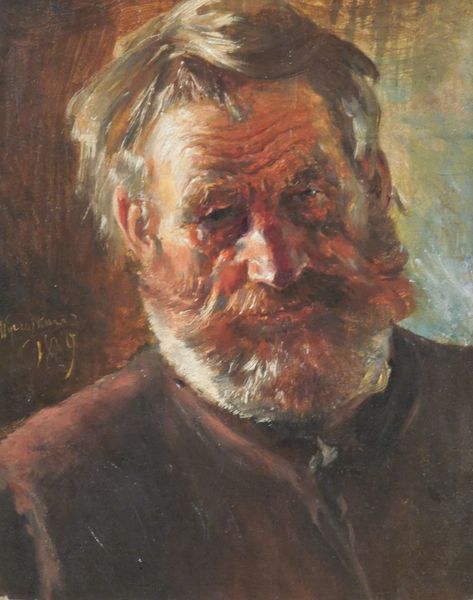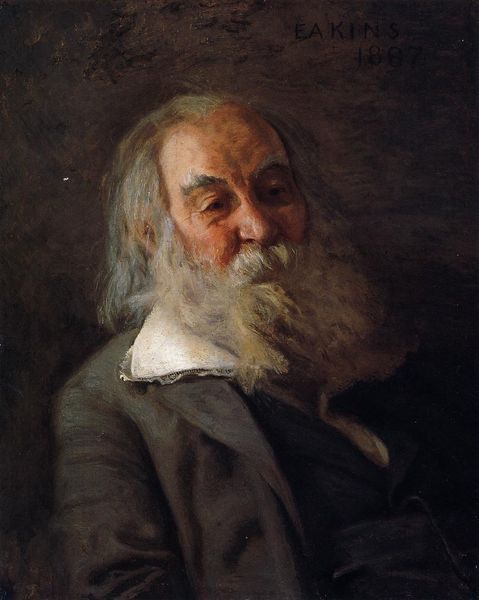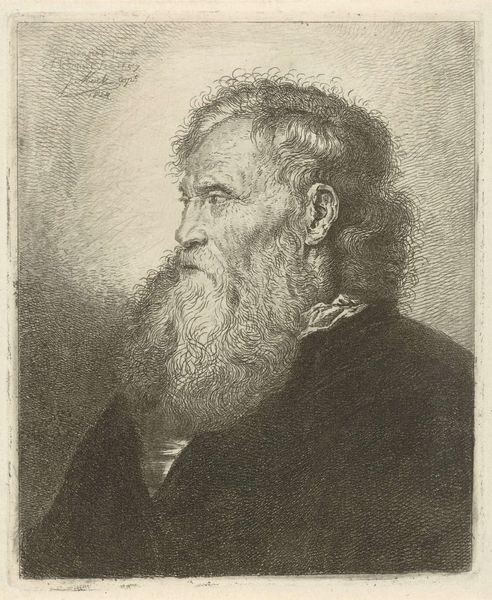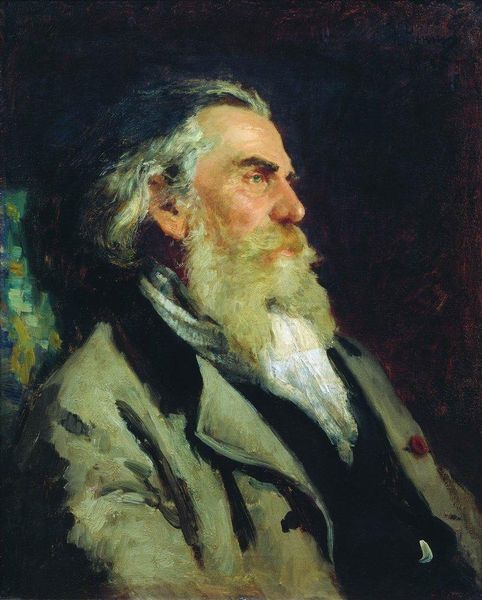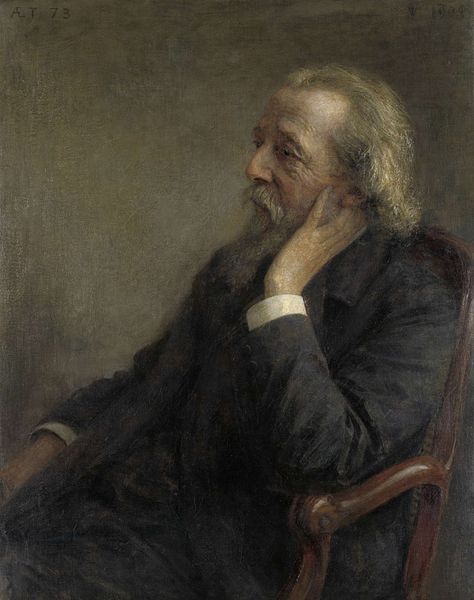
Dimensions: support: 235 x 203 mm
Copyright: CC-BY-NC-ND 4.0 DEED, Photo: Tate
Curator: First impressions? He looks… lived-in. Like he's seen a thing or two. Editor: Indeed. Here we have William Henry Hunt's "Portrait Study of a Bearded Man," currently housed at the Tate. Hunt, born in 1790, was known for his detailed watercolors. Curator: Watercolor gives it this… almost fragile quality, even with that intense gaze. It's like looking at a memory. Editor: Consider the beard, a potent symbol of wisdom and age. Beards, across cultures, mark stages of life and social status. Curator: Oh, totally, it’s like he’s carrying the weight of history right there on his face. But the portrait also feels very intimate, you know? Editor: It could serve as a symbol of resilience, of surviving the relentless passage of time. Curator: Exactly! And that's the magic, isn't it? A simple image holding so much history, emotion, and the artist’s, I think, gentle hand. Editor: Precisely, this study presents the enduring power of portraiture, a quiet dialogue across the ages.
Comments
tate 6 months ago
⋮
http://www.tate.org.uk/art/artworks/hunt-portrait-study-of-a-bearded-man-n01970
Join the conversation
Join millions of artists and users on Artera today and experience the ultimate creative platform.
tate 6 months ago
⋮
Hunt developed a special technique for his figure subjects involving breaking up his washes into separate touches, which could be described as a kind of stippling. He also developed, as did Turner, the practice of scratching out points and lines to provide highlights on the paper, which he would either leave untouched or modify by dotting with watercolour. This work shows his stippling technique as well as knife scratching. Gallery label, September 2004
